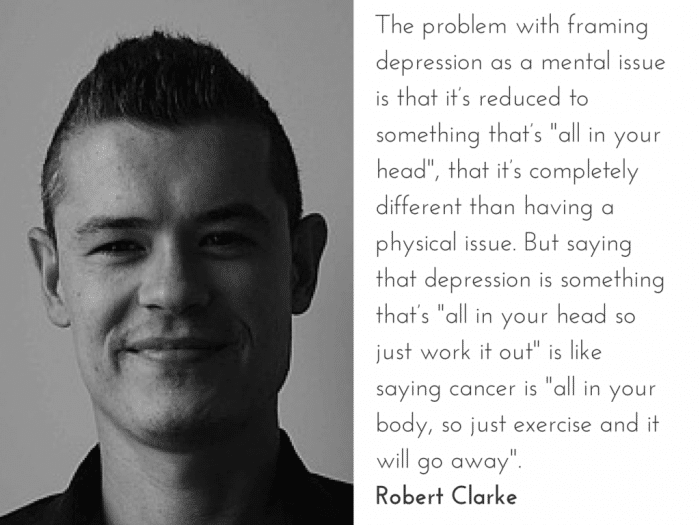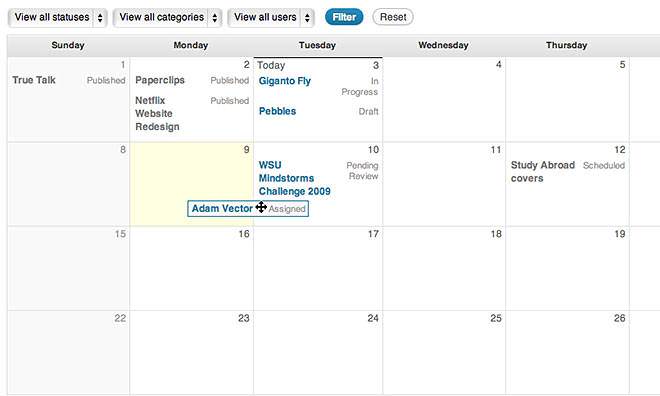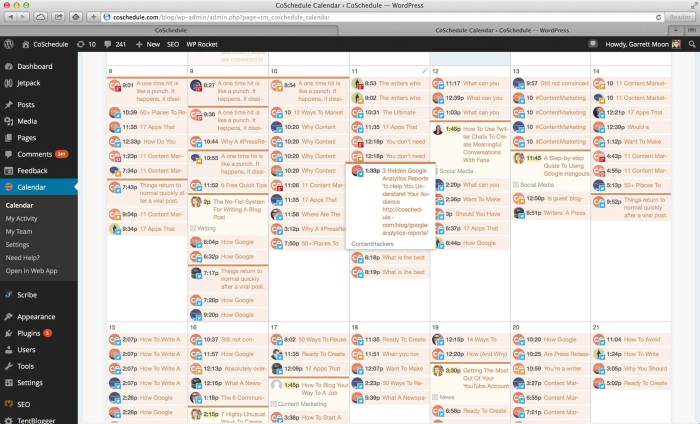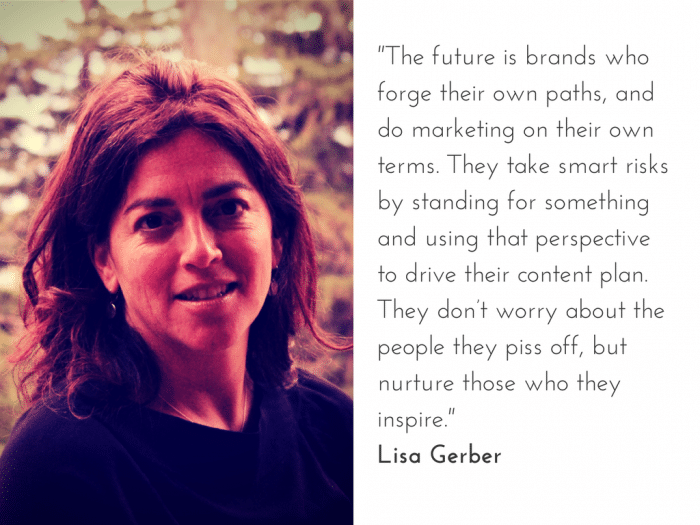This is a guest post by Randy Milanovic, Principal of Kayak Online Marketing, and takes a look at a changing shift in how content is being presented.
A few months back, I noted that a handful of prominent bloggers were switching?things up and taking their content straight to Google+.
As a behavioural change,?I found it interesting; as an online marketing practice, it wasn?t something I was?willing to try.
G+ isn?t the only alternative to blogging, though.
Lately, another set of well-known bloggers ? including our host Danny here on this blog, and Shelley Pringle of Polaris Marketing and PR ? appear to be refocusing their efforts into an email newsletter.
In?Danny?s case, it appears he hasn?t quite given up blogging entirely, though his?posts seem to be shorter and mainly feed into newsletter subscriptions.
If shares and comments are to be viewed as social proof, the number of these?on Danny?s site?has dropped significantly from what were showing with his pre-newsletter?articles.
I assume of course, that Danny?s readers are opting to read the?newsletter rather than engage online. Nothing wrong with that. But what about?getting visitors to his website?
Has he built enough of a following that he doesn?t?need new traffic? That new prospects will ignore the drop in social proof? Or that he?doesn?t need any more clients? After all, last I heard, he has a day job, a young?family, and a real off-line life.
So, is it time to consider trading your blog in for a newsletter like Danny and Shelley did?
Before I get to my own answer, let me start with what I think are the obvious?reasons for doing so.
The Benefits of a Newsletter Approach
A newsletter generally takes less time than a blog (due to reduced online?engagement) and involves a different communication pattern. If you?have a large list of subscribers, there is value in being able to go straight to?them without making them click through to your individual articles.
I wouldn?t be surprised at all if Danny is getting great results and is happy with?his decision. But it?s probably not the same call I?d make for myself, or my?clients, in the near future.
There are a few simple but important reasons why.
The SEO Value of a Blog
For an email newsletter to work, I believe you already need to have a large number of?subscribers.
Blogging, on the other hand, ties closely into website building, social and search?engine optimization, which are about developing a bigger audience and platform as?you go. No matter how optimized your newsletter might be, it isn?t going to?help you rank on Google or the other search engines.
As an aside, though, one benefit to this approach I see is that it removes the?temptation to tailor your content around search engines rather than people. I?would call that a net positive, at least in terms of creating compelling content?that people actually want to read.
Blog Posts Attract Visitors
Even going beyond the search value, fresh blog posts give readers a reason to?come back to your website again and again, while email newsletters generally?don?t (with the exception of a click through to a specific landing page or longer?article).
Generally speaking, good things happen when people go deeper and?deeper into your website, so I would be hesitant to give up anything that draws?them in.
The Perception of Email as Spam
Because most email newsletters are overt sales pitches, subscribers tend to?ignore or unsubscribe from them. That means you could be seen as guilty by?association, even if your articles are timely and insightful.
The simple fact that?people expect them to be sales-oriented might work against you. It?s not lost on?me that blog notifications are emails.
That said, when I get a blog notification,?I?m typically expecting it.
The Time Factor
A lot of people get way too many emails already.
And so, while it might take?them the same amount of time to read a blog post as it would to read your?newsletter (not likely, as I?d expect a newsletter to be ?more?), one is?something they seek out for answers and information, while the other could be?perceived as an interruption.
Problems With Deliverability
Not only do email newsletters need to be CASL-compliant, but lots of popular?email services (like Gmail) aren?t friendly to newsletters.
This could result in you having your messages blocked or inadvertently marked as spam or (gasp!)?promotional, or have all the images blocked, or possibly never get to their inbox?due to security measures blocking image- and link-rich content, which is usually?associated with porn or drug spam.
The Ability to Touch on Multiple Topics and Campaigns in a Blog
In most cases, a series of newsletter emails will need to follow a similar theme?or topic. Blog posts do, too, but can be a little more varied to fit different?themes, campaigns and time-frames.
In that way, I think they have more utility?to appeal to different audiences or marketing personas over time, and, they can?be referenced months and years into the future.
Even with these reservations, I want to be careful to point out that I don?t?necessarily think using a newsletter instead of a blog (or?emphasizing?a?newsletter instead of a blog) is a bad idea.
It’s more on why marketers?should be careful about jumping away from a strategy that is proven to build?your online presence.
But is that the last word on the subject? I?m not sure. I?ll be watching Danny, Shelley and?others as they navigate the newsletter approach.
Who knows, maybe they?ve?figured something out that we haven?t yet.
 About the author: Randy Milanovic is an entrepreneur, marketer, and author of the books 21 New Rules of Content Marketing and 10 Crucial Strategies for Turning Your Online Presence Into Something Your Company Can Actually Use?.
About the author: Randy Milanovic is an entrepreneur, marketer, and author of the books 21 New Rules of Content Marketing and 10 Crucial Strategies for Turning Your Online Presence Into Something Your Company Can Actually Use?.
He blogs about online marketing,?SEO & social engagement topics. A Stage IV Cancer Survivor, Randy has been featured as a?Social Media Today?Best Thinker, and has also been profiled by Financial Post Magazine, under FP Entrepreneur Nov 4/14 (pg 84).
You can read more from Randy on the Kayak blog, and connect with him on Twitter, Google+ and LinkedIn.





 About Robert Clarke:?I’m a listener, engager, and purveyor of social media (when done right). Constantly curious about all things digital, marketing, and more. Partner at Op Ed Marketing in Oakville, Ontario.?Proud daddy to three beautiful girls and a basset hound to boot. A wonderful wife, a wonderful life. Read more at
About Robert Clarke:?I’m a listener, engager, and purveyor of social media (when done right). Constantly curious about all things digital, marketing, and more. Partner at Op Ed Marketing in Oakville, Ontario.?Proud daddy to three beautiful girls and a basset hound to boot. A wonderful wife, a wonderful life. Read more at 


 About Richard Becker: Richard R. Becker (Rich) is an American writer, journalist, communication strategist, educator, and entrepreneur.?
About Richard Becker: Richard R. Becker (Rich) is an American writer, journalist, communication strategist, educator, and entrepreneur.?




 About the author: Sarah Arrow is one of the UK’s leading bloggers. She loves all things blog. You can find her on her own blog at
About the author: Sarah Arrow is one of the UK’s leading bloggers. She loves all things blog. You can find her on her own blog at 


 About Lisa Gerber: Lisa Gerber is the founder of
About Lisa Gerber: Lisa Gerber is the founder of